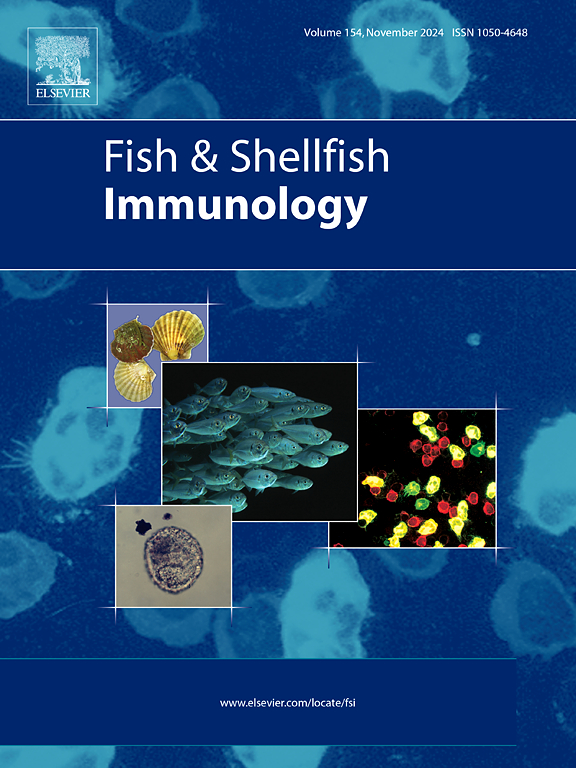Mucosal defences of salmonids in complex RAS environments
IF 3.9
2区 农林科学
Q1 FISHERIES
引用次数: 0
Abstract
Defences at mucosal sites play a critical role in forming robust primary barriers of fish. Because of their close contact with the aquatic environment, these mucosal immune structures and mechanisms are under constant pressure from environmental challenges, especially in intensive aquaculture systems. As recirculating aquaculture systems (RAS) become more widely adopted, there is increasing interest in understanding how these controlled, complex, land-based environments affect mucosal defences in cultured species, particularly salmonids. Modern intensive RAS are highly intricate systems characterised by minimal water exchange and extensive water treatment processes to maintain water quality that supports the biological requirements of fish. However, the unique and dynamic nature of RAS environments exposes fish to a suite of physical, chemical, and microbial pressures that directly affect mucosal surfaces, including skin, gills, gut and olfactory organ. This review consolidates current knowledge on the primary environmental variables monitored in RAS and evaluates their known and potential impacts on the mucosal defences in fish, focusing on salmonids. While the health impacts of these parameters are documented to some extent, the specific consequences for mucosal health are unclear. The majority of these studies have focused on mucosal defences in the gills, with limited understanding of other mucosal organs. Moreover, current knowledge is largely based on histological evaluations, making it challenging to draw functional conclusions about the immunological processes and mechanisms influenced by RAS-related environmental factors. Given the integral role of mucosal barriers in disease resistance and immunity, deepening our understanding of how the RAS environment influences these surfaces is crucial for optimising production practices. As direct interfaces with the environment, mucosal surfaces provide valuable insights into rearing conditions, making their interaction with the RAS environment essential to ensuring fish health and welfare in intensive aquaculture.
复杂RAS环境下鲑科鱼的黏膜防御。
粘膜部位的防御在形成鱼类强大的初级屏障中起着关键作用。由于与水生环境的密切接触,这些粘膜免疫结构和机制不断受到环境挑战的压力,特别是在集约化水产养殖系统中。随着循环水养殖系统(RAS)得到更广泛的采用,人们越来越有兴趣了解这些受控的、复杂的陆地环境如何影响养殖物种的粘膜防御,特别是鲑鱼。现代集约化RAS是高度复杂的系统,其特点是最小的水交换和广泛的水处理过程,以保持水质,支持鱼类的生物需求。然而,RAS环境的独特和动态特性使鱼类暴露在一系列物理、化学和微生物压力下,这些压力直接影响粘膜表面,包括皮肤、鳃、肠道和嗅觉器官。这篇综述巩固了目前关于RAS监测的主要环境变量的知识,并评估了它们对鱼类粘膜防御的已知和潜在影响,重点是鲑鱼。虽然这些参数对健康的影响在一定程度上有记录,但对粘膜健康的具体后果尚不清楚。这些研究大多集中在鳃的粘膜防御上,对其他粘膜器官的了解有限。此外,目前的知识主要基于组织学评估,因此很难得出ras相关环境因素影响的免疫过程和机制的功能结论。考虑到粘膜屏障在疾病抵抗和免疫中的整体作用,加深我们对RAS环境如何影响这些表面的理解对于优化生产实践至关重要。作为与环境的直接接口,粘膜表面提供了对饲养条件的宝贵见解,使其与RAS环境的相互作用对集约化水产养殖中确保鱼类健康和福利至关重要。
本文章由计算机程序翻译,如有差异,请以英文原文为准。
求助全文
约1分钟内获得全文
求助全文
来源期刊

Fish & shellfish immunology
农林科学-海洋与淡水生物学
CiteScore
7.50
自引率
19.10%
发文量
750
审稿时长
68 days
期刊介绍:
Fish and Shellfish Immunology rapidly publishes high-quality, peer-refereed contributions in the expanding fields of fish and shellfish immunology. It presents studies on the basic mechanisms of both the specific and non-specific defense systems, the cells, tissues, and humoral factors involved, their dependence on environmental and intrinsic factors, response to pathogens, response to vaccination, and applied studies on the development of specific vaccines for use in the aquaculture industry.
 求助内容:
求助内容: 应助结果提醒方式:
应助结果提醒方式:


